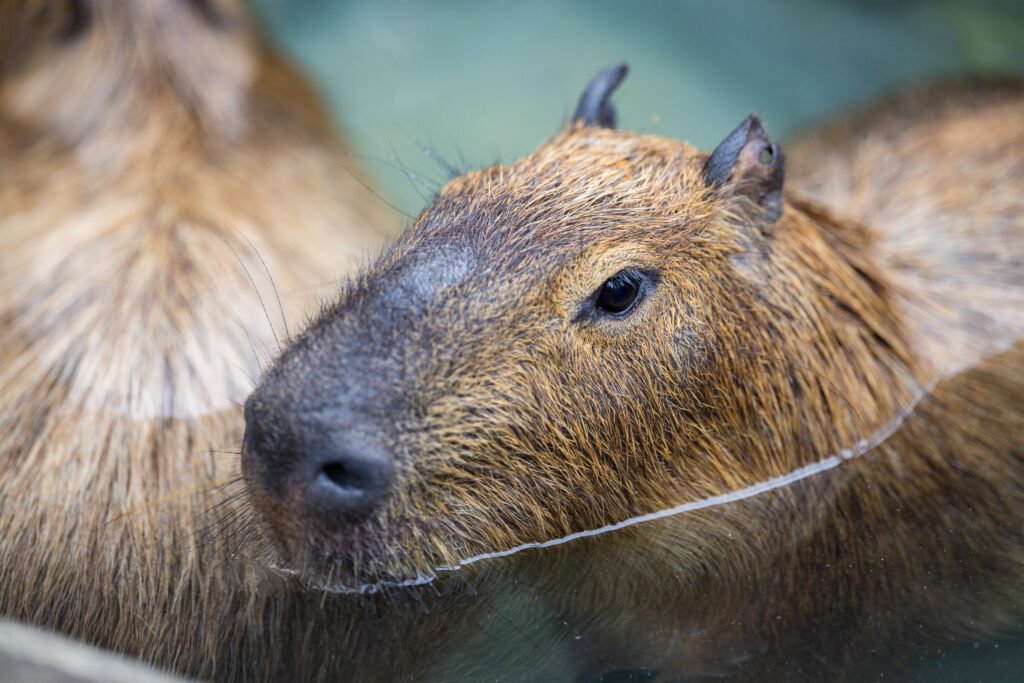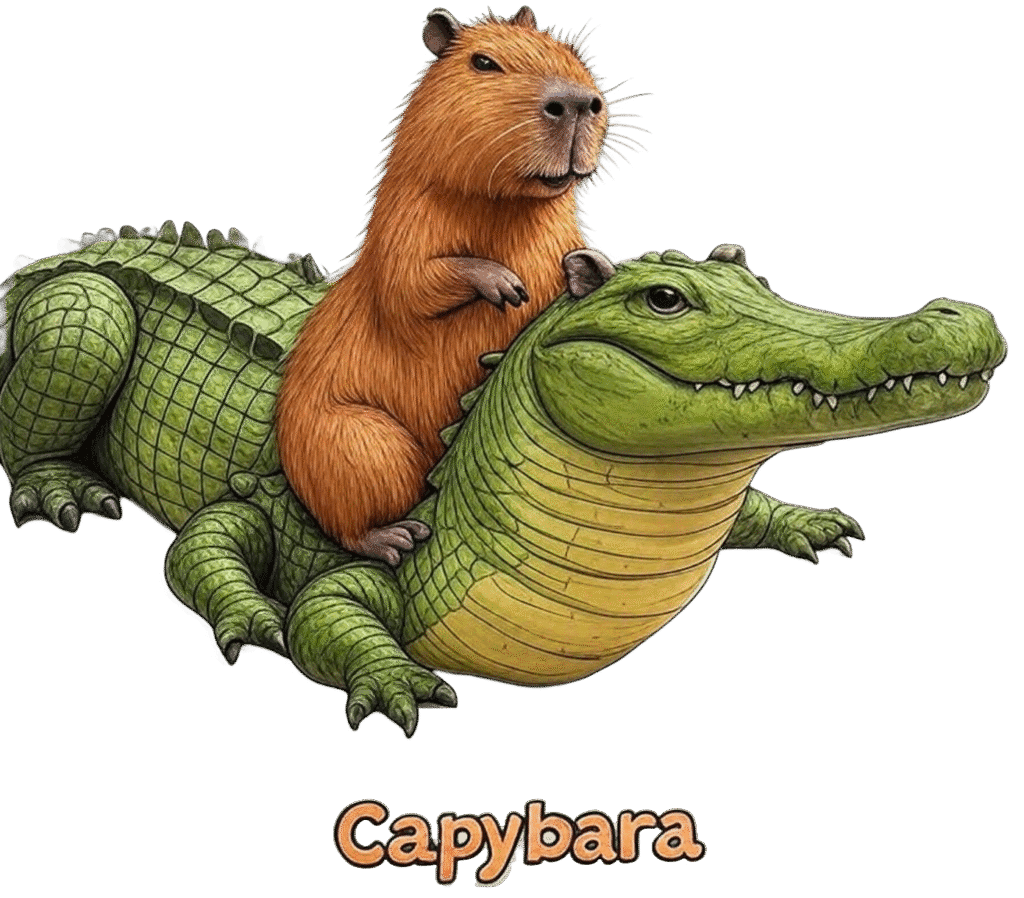The Hidden Scent: Unlocking the Secret Language of the Capybara
Updated August 10, 2025
The capybara is a global sensation, loved for its calm demeanor and ability to get along with just about everyone. But beneath its famously tranquil exterior, the capybara animal has a hidden world of communication that most people never see or, more accurately, smell. Capybaras have a secret scent gland, a powerful tool that allows them to talk to each other without making a sound.
In this blog post, we’ll dive into this fascinating capybara fact and uncover the secrets of their scent communication. We’ll explore what this gland is, why it’s so important for their social life, and how it challenges the popular image of a simple, quiet creature.
Unveiling the Morillo: The Scent Gland on the Snout
On the top of a male capybara’s snout, there is a prominent, raised patch of skin that is darker than the surrounding fur. This is known as the morillo, and it is the key to their secret language. The morillo is a specialized scent gland that secretes a unique, oily, and waxy substance. It’s a natural tool that helps them communicate their identity, status, and intentions to other capybaras.

The size of the morillo gland is a reliable indicator of a male’s social status. A dominant male will typically have a larger, more pronounced morillo and will use it more frequently for scent marking. This scent-based signal is a crucial part of the social hierarchy within a capybara herd.
Scent Marking: A Form of Non-Verbal Communication
Capybaras use the morillo gland in a behavior known as scent marking. A male will rub the morillo on vegetation, trees, or even on the ground to leave his unique “chemical fingerprint.” This is a powerful form of non-verbal communication that serves several critical purposes:
- Territory Marking: The scent marks a capybara’s territory, letting other capybaras know that this area is occupied. This helps to reduce conflicts between rival groups and establishes the boundaries of their capybara habitat.
- Establishing Dominance: The morillo’s scent communicates a male’s social status and dominance. A dominant male’s scent marks are a clear signal to subordinates and challengers, helping to maintain order within the group.
- Attracting Mates: The scent is also used to attract females. When a female in estrus is looking for a mate, she can use the scent markings to find a male who is of a suitable status and ready to breed.
This intricate system of scent marking is a testament to the complex social lives of capybaras. It shows that their communication is far more nuanced than their simple capybara noise, which is typically limited to barks, purrs, and whistles.
Beyond the Morillo: A System of Scents
The morillo gland is not the only scent-based tool in a capybara’s arsenal. Both male and female capybara animal have anal glands that also secrete a substance used for territorial marking and identifying individuals. This dual system of scent communication from the morillo on the snout to the glands near the tail allows them to send and receive a variety of signals about their identity and their intentions.
This fascinating aspect of their biology reveals a lot about the capybara’s intelligence and their highly structured social environment. They are not just passive creatures; they are actively and constantly communicating with each other through a language of scent that is often invisible to us.
What This Means for Capybara Owners
For anyone who is intrigued by the idea of a capybara as a pet, understanding this aspect of their behavior is very important. Capybaras have an innate need to scent mark, and they will do it on their surroundings. A pet owner should be prepared for this behavior and understand that it is a natural and necessary part of a capybara’s life.
It also reinforces the fact that the capybara is not a domesticated animal. Their instincts, including the need to communicate through scent, are deeply ingrained. Providing them with a proper environment that allows them to express these natural behaviors is a key part of responsible ownership.
From Secret Scents to Global Fame
The capybara’s image as a symbol of tranquility is well-deserved, but this one capybara fact about their secret scent gland adds a new layer of complexity to their story. It reveals that behind the laid-back persona is a creature with a rich and intricate social life, communicating through a hidden language of scent that governs everything from dominance to dating.
This surprising detail is a reminder that the most fascinating aspects of an animal’s life are often the ones we can’t see or hear. From their charming demeanor to their secret communication, the capybara continues to be a source of endless wonder, inspiring capybara memes and bringing joy to people all over the world.

